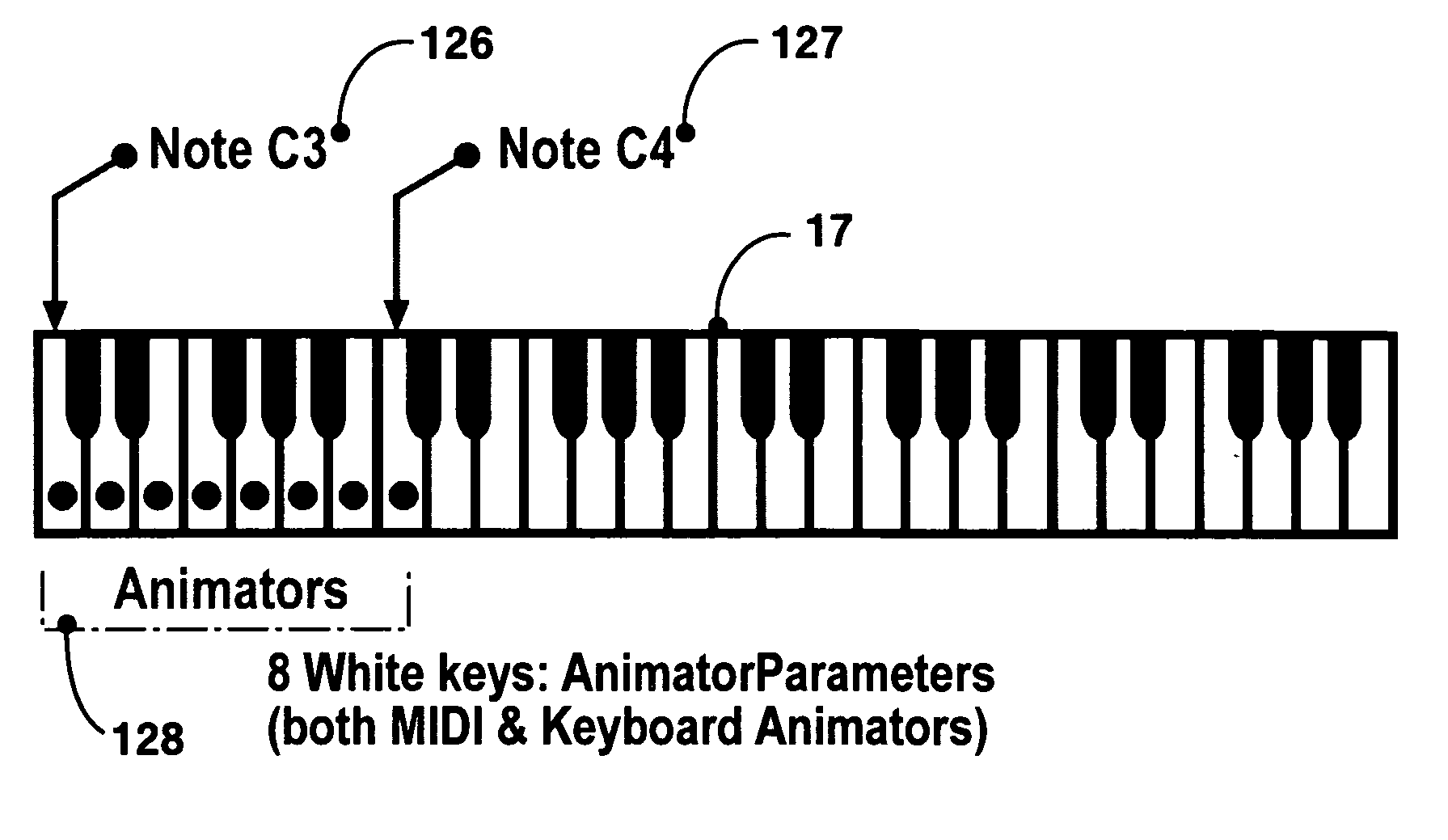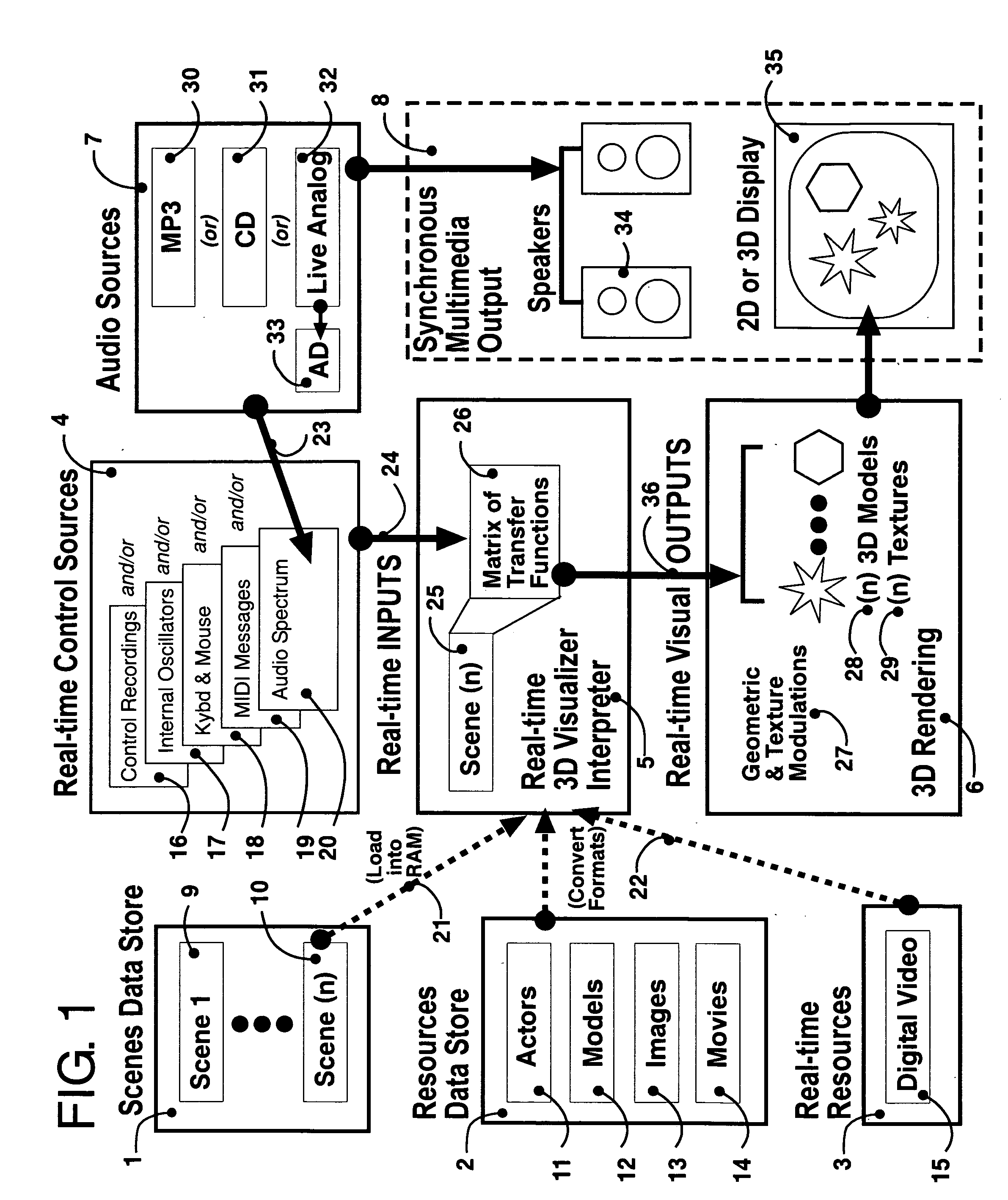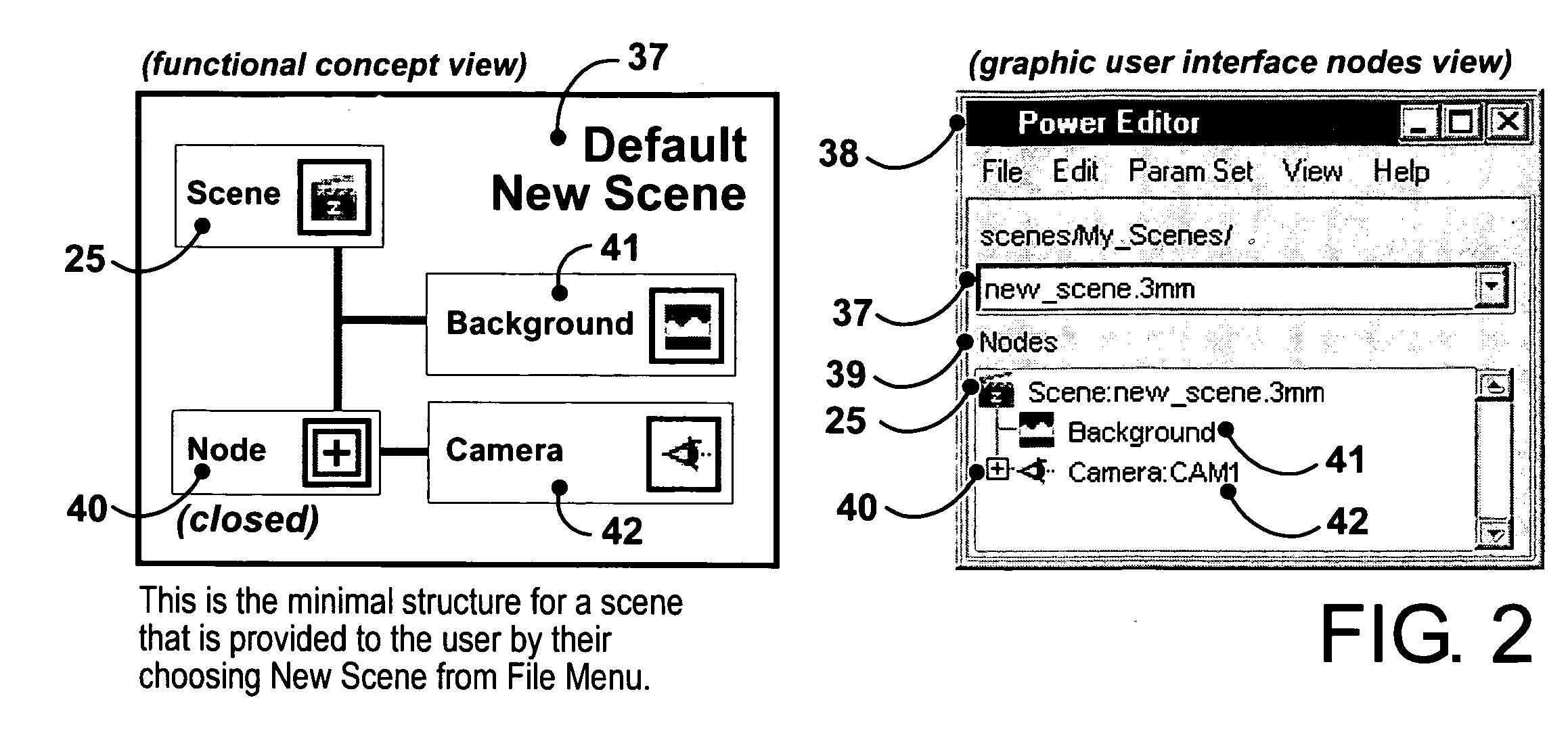Cybernetic 3D music visualizer
a music visualization and 3d technology, applied in computing, electrophonic musical instruments, instruments, etc., can solve the problems of ineffective use of existing methods, all relatively limited in aesthetic possibilities, and used in real-tim
- Summary
- Abstract
- Description
- Claims
- Application Information
AI Technical Summary
Benefits of technology
Problems solved by technology
Method used
Image
Examples
example # 1
Example #1 of Divided Control Ranges
[0174]FIG. 14 illustrates an example of how to begin to divide up the control range for each the various sources, for say the first such Animator [95] one has in a Scene: What we show in FIG. 14 is: [0175] a. The Audio [20] coming through Winamp [7] has been reduced to a “slice” of the audio spectrum [112], by setting up a number of audio frequency “bins” and specifying which particular bin(s)' amplitude contributes towards a summed amplitude value to this Animator's output; (note: even frequency bin definition fields are animatable parameters); [0176] b. The internal Oscillators [17] have been setup in a way that only one of the four are contributing to the Animator's output [88] value, namely the first [113] or OSC1; [0177] c. The PC Keyboard [17] has been setup so that only one key, the Q key [114], will contribute to the Animator's output [88]; [0178] d. For MIDI [17] we're using (a MIDI piano keyboard's) Note ON Message Type, and we've limit...
example # 2
Example #2 of Divided Control Ranges
[0182]FIG. 15 illustrates an example of how to divide up the control range for the various sources, for say the Animator #2 [125] in the Scene, and to clearly distinguish its contribution from that of the first Animator.
[0183] What we show in FIG. 15, as contrasted from the FIG. 14“Animator #1” example, is: [0184] a. The Audio [20] coming through Winamp [7] has been reduced to a different “slice” of [116] the audio spectrum, by setting up a number of audio “bins” and specifying which particular bin(s) contributes a value to this Animator's output [88], to cover a different audio frequency range as compared to that of the Animator #1 setup; [0185] b. The internal Oscillators [17] have been setup in a way that only one of the four are contributing to the Animator #2[125] output value, namely the second [117] or OSC2; [0186] c. The PC Keyboard [17] has been setup so that only one key, the W key [118], will contribute to the Animator #2 [125] output...
PUM
 Login to View More
Login to View More Abstract
Description
Claims
Application Information
 Login to View More
Login to View More - R&D
- Intellectual Property
- Life Sciences
- Materials
- Tech Scout
- Unparalleled Data Quality
- Higher Quality Content
- 60% Fewer Hallucinations
Browse by: Latest US Patents, China's latest patents, Technical Efficacy Thesaurus, Application Domain, Technology Topic, Popular Technical Reports.
© 2025 PatSnap. All rights reserved.Legal|Privacy policy|Modern Slavery Act Transparency Statement|Sitemap|About US| Contact US: help@patsnap.com



